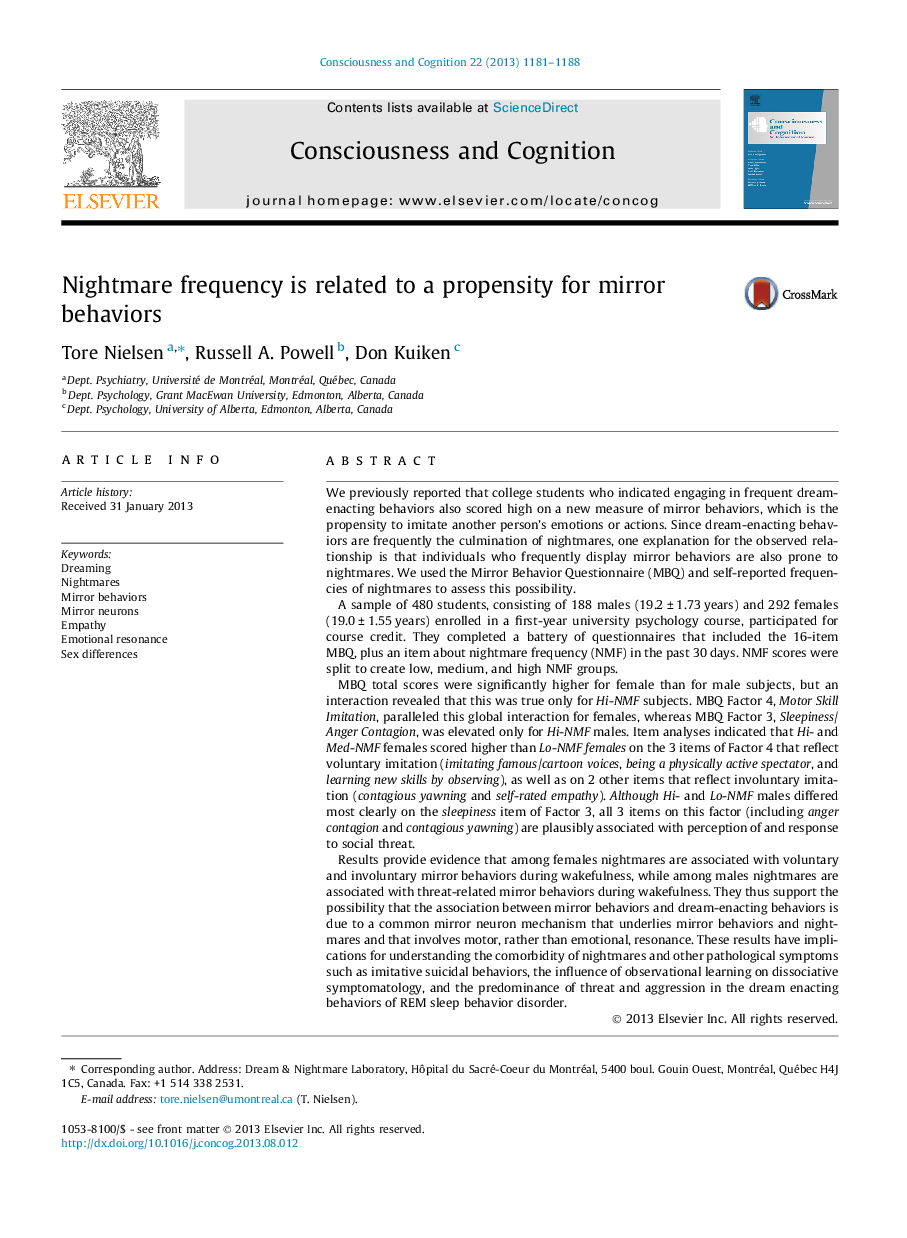| Article ID | Journal | Published Year | Pages | File Type |
|---|---|---|---|---|
| 10458501 | Consciousness and Cognition | 2013 | 8 Pages |
Abstract
Results provide evidence that among females nightmares are associated with voluntary and involuntary mirror behaviors during wakefulness, while among males nightmares are associated with threat-related mirror behaviors during wakefulness. They thus support the possibility that the association between mirror behaviors and dream-enacting behaviors is due to a common mirror neuron mechanism that underlies mirror behaviors and nightmares and that involves motor, rather than emotional, resonance. These results have implications for understanding the comorbidity of nightmares and other pathological symptoms such as imitative suicidal behaviors, the influence of observational learning on dissociative symptomatology, and the predominance of threat and aggression in the dream enacting behaviors of REM sleep behavior disorder.
Related Topics
Life Sciences
Neuroscience
Cognitive Neuroscience
Authors
Tore Nielsen, Russell A. Powell, Don Kuiken,
